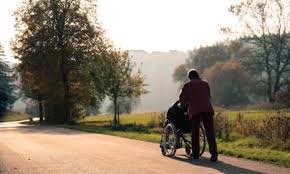Italy: A guide to Italy’s most famous song

Rome: Italy’s most popular song contest returns to its usual venue at the Teatro Ariston in Sanremo, a seaside town on the northwest Ligurian coast, with 25 artists battling it out over five nights from 1-5 February 2022.
The event, whose official title is the Festival della canzone italiana di Sanremo, has been held every year since 1951, making it the world’s longest-running annual televised music competition at a national level.
Now in its 72nd edition, Sanremo was the inspiration for the Eurovision Song Contest and the winner often represents Italy in the European competition, which this year will be held in Turin on 14 May.
Over the years Sanremo has launched the careers of numerous Italian acts, notably Andrea Bocelli, Laura Pausini, Eros Ramazzotti and Zucchero, as well as last year’s winners Mäneskin who will return as special guests in 2022.
However the festival’s biggest claim to fame internationally is perhaps Nel blu, dipinto di blu, popularly known as “Volare”, a song performed by Italian singer-songwriter Domenico Modugno at the 1958 Sanremo before it took the world by storm.
Surrounded by hype, the annual extravaganza tends to divide Italy into the “love it or hate it” camps, along with Italians who profess to never watch it but in reality are among the millions glued to their television screens.
The 2022 host and artistic director, for the third year in a row, is TV presenter Amedeo Sebastiani, better known as Amadeus, who is set to be joined on stage by the popular comedian Fiorello.
A co-host will present the event with Amadeus each night, all of whom are well-known personalities in the world of showbiz: Ornella Muti, Lorena Cesarini, Drusilla Foer, Maria Chiara Giannetta and Sabrina Ferilli.
Notable hosts of Sanremo over the years include veteran TV presenters Pippo Baudo and Mike Bongiorno, who each hosted about a dozen editions of the festival.
In 2001 Sanremo was presented by pop icon Raffaella Carrà who died last sumer aged 78.
The following are the 25 artists and acts in competition this year: Achille Lauro, Michele Bravi, Iva Zanicchi, Rkomi, Fabrizio Mor, Irama, Mahmood & Blanco, Giusy Ferreri, Giovanni Truppi, Emma, Aka7even, Dargen D’Amico, Gianni Morandi, Ditonellapiaga e Rettore, Elisa, Noemi, Highsnob e HU, Le Vibrazioni, Sangiovanni, Massimo Ranieri, La Rappresentante di Lista, Ana Mena, Yuman, Tananai, Matteo Romano.
The acts tipped to win, according to bookmakers Stanleybet, include joint favourites Elisa and Mahmood & Blanco, with Emma third favourite.
All three are former Sanremo winners: Mahmood won with Soldi in 2019, Emma Marrone won with Non è l’inferno in 2012, and Elisa won in 2001 with the massive hit Luce which she co-wrote with Zucchero.
This year’s special guests, in addition to Mäneskin who won Sanremo 2021 with Zitti e Buoni, will include singers Checco Zalone, Laura Pausini and Cesare Cremonini.
The origins of Sanremo go back to post-war Italy when the festival was established to revitalise the battered economy and forge a new cultural identity.
Between 1953 and 1971 the festival welcomed guest artists from abroad who launched their songs to a new Italian audience.
Among the many international acts who performed at Sanremo during this era were Louis Armstrong, Stevie Wonder, Cher, Dionne Warwick and Shirley Bassey.
Each act performs a new, original song, which has never been released, with the winner selected by a jury and an online public vote.
The 25 artists, divided into two groups, perform their songs over the first two nights of the festival.
On Thursday 3 February the singers return to the stage to perform again, while the Friday night will see the acts perform covers of Italian or international songs recorded between the 1960s and 1990s.
On Saturday 5 February the singers will perform their songs again before the winner is announced.
The festival will be screened by state broadcaster RAI 1 every evening, starting from 20.35, and in streaming on Rai Play, from 1-5 February.
This year Sanremo will return to 100 per cent audience capacity, with guests equipped with the covid Super Green Pass, in contrast to the 2021 edition which was held without the public in an empty theatre. The festival can be followed on its official website as well as its social media channels.





